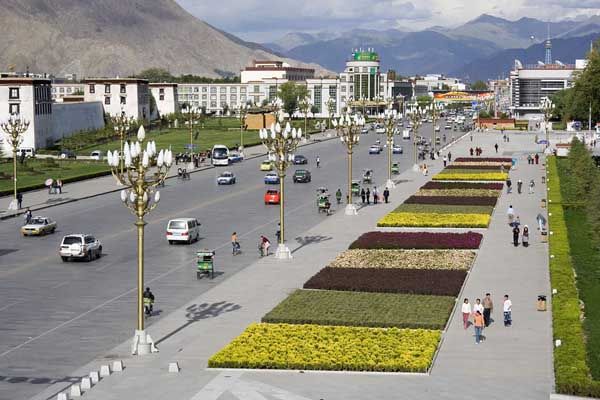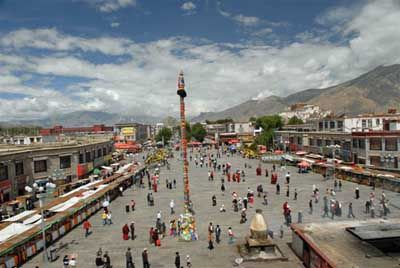Holiday Resolution
Lhasa (ལྷ་ས་; lha sa; 拉薩; Lāsà) is rightly one of the most featured and dreamt-about cities in the world. This is not only because of its high altitude at 3,650 meters
(11,975 feet) which means remoteness and limited accessibility, but also because of its over 1,000 years' cultural and spiritual history which leaves an impressive heritage that has helped to create the romantic and mysterious Tibetan religion.
Different from the inland cities and other places in that high land, Lhasa is unique with an allure all of its own. In the Tibetan language, Lhasa means the Holy Land or the Buddha Land. It is the center of Tibet's politics, economy and culture. The city has also been appointed as one of the 24 historical and cultural cities of China. The splendor and grandeur of the Potala Palace remains a world-famous symbol of the enigmatic power of politics and religion in this region.
As the beautiful capital city of Tibet Autonomous Region (TAR), Lhasa is situated in the South Central part of the region, on the North bank of the Kyichu River in a mountain-fringed valley. This ancient sprawling city, settled 1,300 years ago, covers 30,000 square kilometers (11,583 square miles), with a population of 400,000, of which 87 percent are Tibetans. The urban population is 180,000.




No comments:
Post a Comment